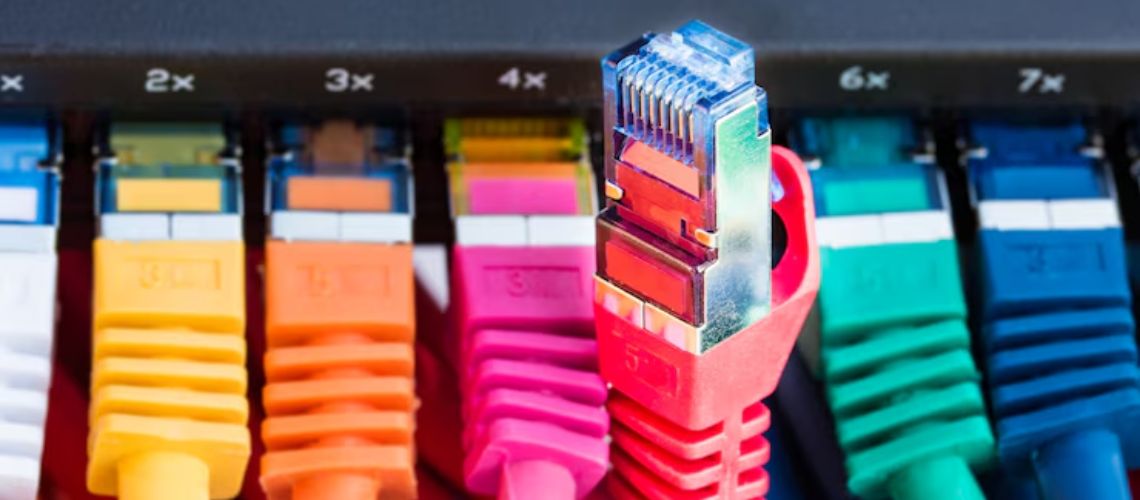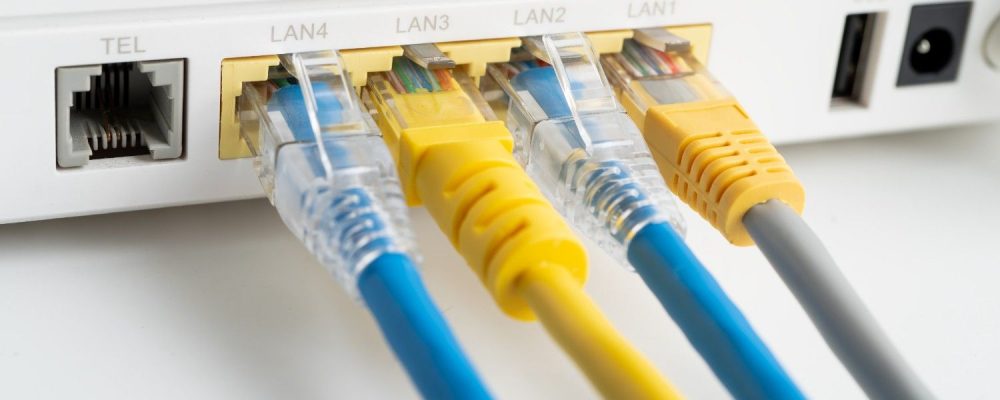Summary : Cat5e cable wiring enhances network performance by supporting faster data transfer speeds, reduced crosstalk, and improved reliability compared to older cabling standards. Designed for Gigabit Ethernet, Cat5e cables handle up to 1000 Mbps, making them ideal for modern home and business networks. Proper wiring ensures stable connections, minimal interference, and efficient bandwidth use. This guide highlights how Cat5e cable wiring boosts speed, stability, and scalability, helping you build a stronger and more future-ready network infrastructure.

When it comes to network cabling, the performance and dependability of your system can be significantly impacted by the type of cable you choose. Cat5e, or category 5 enhanced cable, is one of the most widely used options for network cabling available today. It has various benefits over its predecessors. We will look at how Cat5e cable wiring in NJ improves network performance, what influences network performance, why utilizing Cat5e cables is beneficial, best practices for installation, and more in this extensive article.
Cat5e (Category 5 Enhanced) cable is an improved version of the original Cat5 cable. It is designed to support faster data transmission speeds and greater bandwidth capabilities, making it suitable for modern networking needs. Cat5e cables are commonly used in Ethernet networks and can support gigabit Ethernet speeds up to 1000 Mbps (1 Gbps). They comprise four twisted pairs of copper wire, which help reduce interference and crosstalk between the wires.
Bandwidth: Up to 100 MHz
Data Transmission Speed: Up to 1 Gbps
Maximum Length: 100 meters (328 feet) for standard Ethernet applications
Backward Compatibility: Compatible with Cat5 and Cat3 cabling standards
To understand how Cat5e cable wiring enhances network performance, it’s essential to consider the factors that impact network performance. These factors include bandwidth requirements, data transfer speeds, signal integrity, and reliability.
Bandwidth refers to the maximum amount of data transmitted over a network connection in a given amount of time. As network applications and devices evolve, the demand for higher bandwidth has increased. Cat5e cables provide a higher bandwidth capacity than their predecessors, supporting up to 100 MHz. This makes them suitable for bandwidth-intensive applications like video streaming, online gaming, and large file transfers.
Data transfer speed is a critical factor in network performance. It determines how quickly data can be transmitted from one device to another. Cat5e cables support up to 1 Gbps data transfer speeds, making them ideal for modern Ethernet networks. This high-speed capability ensures data is transmitted quickly and efficiently, reducing latency and improving overall network performance.
Signal integrity refers to the quality of the electrical signals transmitted over the network cables. Poor signal integrity can result in data loss, errors, and reduced network performance. Cat5e cables are designed with improved specifications to minimize interference and crosstalk, ensuring better signal integrity and reliability. Data can be transmitted more accurately and consistently, enhancing the network’s performance.

Cat5e cable wiring offers several benefits that contribute to enhanced network performance. These benefits include improved data transmission, reduced crosstalk and interference, versatility, and enhanced network stability.
One of the primary benefits of Cat5e cable wiring is improved data transmission. The enhanced specifications of Cat5e cables allow for faster and more reliable data transfer compared to older cable types. Large files can be transferred quickly, and network applications can run more smoothly. Whether streaming high-definition video, playing online games, or conducting video conferences, Cat5e cables ensure data is transmitted efficiently.
Crosstalk and interference are common issues in network cabling that can degrade signal quality and reduce network performance. Crosstalk occurs when signals from one pair of wires interfere with signals from another. Cat5e cables are designed to minimize crosstalk and interference with improved shielding and tighter twists in the wire pairs. This results in cleaner signal transmission and fewer errors, enhancing the network’s overall performance.
Cat5e cables are versatile and can be used in various networking applications. They are compatible with multiple devices, including computers, routers, and switches. Additionally, Cat5e cables are suitable for different types of Ethernet networks, including Fast Ethernet (100 Mbps) and Gigabit Ethernet (1 Gbps). This versatility makes Cat5e cables popular for residential and commercial networking installations.
Network stability is crucial for ensuring consistent and reliable network performance. Unstable networks can lead to dropped connections, data loss, and reduced productivity. Cat5e cables enhance network stability by providing reliable and consistent data transmission. Their improved specifications and reduced interference ensure that network connections remain stable, minimizing the risk of connectivity issues.
Following best practices during installation is essential to maximize the benefits of Cat5e cable wiring and ensure optimal network performance. Proper cable management, avoiding bending and stretching, and professional installation are vital factors.
Proper cable management is essential for maintaining the performance and longevity of Cat5e cables. This involves organizing and securing cables to prevent tangling, kinking, and damage. Cable management tools such as cable ties, cable organizers, and cable trays can help keep cables organized and protected. Additionally, labeling cables can make it easier to identify and troubleshoot connections if issues arise.
Bending and stretching Cat5e cables can damage the internal wires and degrade signal quality. When installing Cat5e cables, avoiding sharp bends and excessive stretching is essential. Following the manufacturer’s minimum bend radius and cable tension guidelines can help prevent damage and ensure optimal performance. When routing cables, use gentle curves and avoid pulling or tugging on them.
Professional installation is crucial for ensuring that Cat5e cables are installed correctly and perform optimally. Professional installers have the expertise and experience to follow industry standards and best practices. They can also perform tests to verify the cables’ performance and integrity. Hiring a professional installation service, such as Network Drops, can provide peace of mind and ensure your network operates at its best.

For those looking to upgrade their network with Cat5e cable wiring in NJ, Network Drops offers professional installation services to enhance your network performance. With years of experience and a commitment to quality, Network Drops ensures that your network is set up for success. Whether you need a new installation, an upgrade, or troubleshooting services, Network Drops has the expertise to meet your needs.
Cat5e cables improve data transmission by offering higher bandwidth capacity and faster data transfer speeds than older cable types. The enhanced specifications of Cat5e cables, including reduced crosstalk and interference, ensure that data is transmitted more accurately and efficiently. This results in faster and more reliable data transfer, enhancing overall network performance.
Cat5e cables are faster due to their improved design and specifications. They support higher bandwidth (up to 100 MHz) and data transfer speeds (up to 1 Gbps), making them suitable for modern Ethernet networks. The tighter twists in the wire pairs and improved shielding reduce interference and crosstalk, allowing for cleaner signal transmission and faster data transfer.
The purpose of Cat5e cable in networking is to provide a reliable and efficient means of transmitting data between devices in an Ethernet network. Cat5e cables connect computers, routers, switches, and other network devices, enabling communication and data transfer. They support high-speed data transmission and are suitable for various networking applications, including internet access, file sharing, and video streaming.
The lifespan of Cat5e cables can vary depending on factors such as installation practices, environmental conditions, and usage. However, with proper installation and maintenance, Cat5e cables can last for many years. They are designed to be durable and resistant to wear and tear, making them a reliable choice for long-term network installations. Regular inspections and proper cable management can help extend the lifespan of Cat5e cables.
Yes, Cat5e cables can be used for Power over Ethernet (PoE) applications. PoE allows electrical power to be transmitted over Ethernet cables and data, enabling the use of devices such as IP cameras, wireless access points, and VoIP phones without needing separate power supplies. Cat5e cables can support PoE and PoE+ (which provide higher power levels) applications, making them a versatile choice for network installations that require data and power transmission.
"*" indicates required fields
Scott Fcasni is the driving force behind Shock I.T. Support’s commercial datacomm cabling division, delivering expert solutions that power reliable, high-performance network infrastructures. With extensive experience in structured cabling and a commitment to precision, Scott ensures that every project—whether for small businesses or large enterprises—meets the highest standards of quality and scalability.